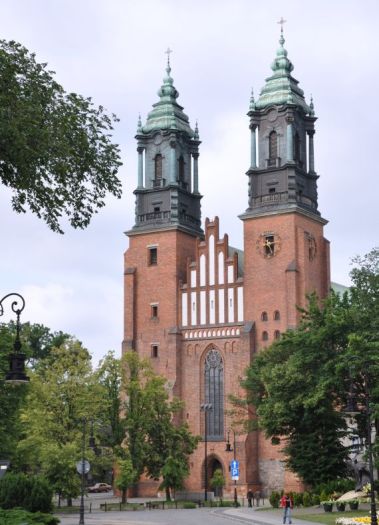
The city lies on the Warta river. It is the capital of Wielkopolska Voivodeship and the see of the Archdiocese of Poznań. It is an important point on the Piast Trail.
Ostrów Tumski (Cathedral Island) is the oldest part of the city and is situated where the Cybina runs into the Warta. The history of both Poznań and Poland began right here. Duke Mieszko I built a grad with a ducal palatinate – the first secular stone building in Poland – on the island in the 10th century. He brought Princess Dobrawa of Bohemia here in 965 and was baptised in 966. The building of Poland’s first cathedral began not long afterwards.
The ducal grad was shaped like an 80m x 100 m ellipse and stood on a site now occupied by the Church of the Blessed Virgin Mary in Summo (Latin: on the grad). It was encircled by a strong embankment (10–12 m high and approx. 20 m wide at the base). A fairly large settlement lay directly beside the grad where the cathedral now stands, while today’s Zagórze was a trading post. The strength of the grad is attested by the fact that Holy Roman Emperor Henry II withdrew his army from Poznań in 1005, deeming it impregnable.
Bretislaus I, Duke of Bohemia, destroyed the Poznań grad during a raid in 1038. Kazimierz (Casimir) the Restorer, seeing the devastation, temporarily moved the capital to Cracow – where it remained for centuries. Poznań was granted city rights and moved to the left bank of the Warta in the mid-13th century. Ostrów Tumski became the property of the bishops and was granted independent city rights a few years later.
Bishop Jan Lubrański founded an academy here in 1519. This was the first school in Poland to teach according to the new humanistic principles. The Lubrański Academy building now houses the Archdiocesan Museum. More significant changes had to wait for the partitions. The Church had its property confiscated in 1797 and Ostrów Tumski was included in the Poznań municipal boundary three years later.








